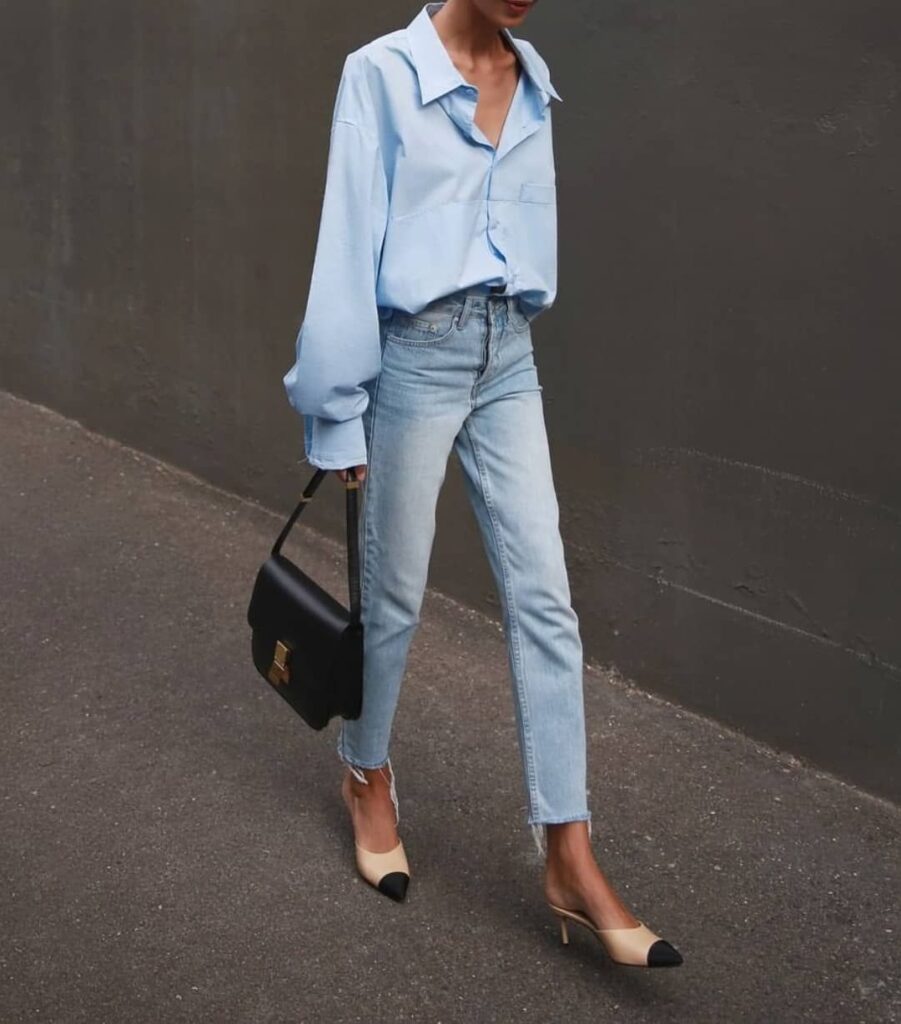In thirteen years, the offer and the quality of jeans have evolved, your expectations too. So, this is a brand-new guide to jeans that we offer here.
The Assembly And Details Of A Good Pair Of Jeans For Men
In addition to a quality canvas, the assembly of jeans must be flawless if you want to keep them for a long time. The jeans are made in selvedge doesn’t mean the craft is good, especially on entry-level products. We will therefore see all these small details justifying a high price.
- Seams And Assembly Of Good Jeans
Tight stitches, not too delicate and aligned, reveal regular and careful work: in terms of tailoring by Yishion womens clothing, the same criteria often come up. Conversely, we see on low-end jeans points of different sizes, sewn askew and coarse, which is incompatible with the durability of pants.
With your jeans in hand, you can pull lightly on either side of a seam to appreciate the tightness. It’s a bad sign when the two yokes move apart, and the light passes through the stitches.
Also note: old school brands like Real McCoy’s or Flat Head offer jeans with a relatively low number of stitches per centimetre, quite simply because that’s how vintage jeans were made. But these are not the ones you will find in most stores!
Zero tolerance for yarn fraying: while some purists prefer 100% cotton yarn, it is less resistant than polycotton yarn (a blend of polyester and cotton) used by most brands.
The inside of the jeans also gives a lot of clues. The seams appear more clearly. We will look inside the thighs, more exposed to friction and wear. Also, watch the rear joint at the level of the buttocks and the fly, very regularly used! As well as the seams along the leg on the outside of the thigh, hems, pockets, etc.
- Details That Make The Difference In Jeans
The Stopping Point
Thanks to it, friction, tension, and other overloaded wallets will not see better pocket corners, which are often fragile. A good retoucher can do this type of reinforcement.
Pocket Linings
They hold our keys, cell phones, and a multitude of other things. A thick and regular canvas is therefore welcome. Be careful with its assembly, which can damage it if it is poorly made. With a high-end product, we find this lining on the back pockets.
Chain Stitch Hem
This is a particular case in terms of finishes when getting straight cut jeans for women. Contrary to what one might think, the chain stitch is less resistant than a classic stitch, but it is prettier, and this is how vintage jeans were made in the past. It turns out it’s a lot easier to do than it looks, even by hand!
Copper Rivets
This pinkish hue is pretty and gives nobility to the garment. However, I have also seen many jeans where each label personalized these small metal punches.
In this case, it can be interesting, especially when there is additional work and, therefore, exceptional attention to detail. We see them mainly on the outside of the jeans, but they are welcome inside, especially in the back pockets.
Which Cut Of Jeans To Choose?
Even if we can find some specificities from one brand to another, five cuts are adapted to a specific silhouette and style.
- The Bootcut Jeans Cut
The bootcut is a bit like the denim version of the elephant’s paw. Unless you are very tall and strong, I do not recommend this cut which quickly unbalances the silhouette.
- The Straight Cut Of Jeans
False friend of thin people, straight jeans are intended primarily for those with well-muscled thighs. Otherwise, you give the impression of swimming in it without highlighting your figure.
- The Tapered Jean Cut
The tapered cut is remarkable. It is comfortable up to the knee, then tapered. We are, therefore, close to a carrot cut without having such a low fork. We advise you to already have good denim basics before trying this kind of cut, more pointed style level.
- The Slim Jeans Cut
The slim can be connoted as “adolescent.” Either way, it flatters slender, slim figures more easily, fitting more easily into rock-inspired looks.
- The Semi-Slim Jeans Cut (Or “Fitted Straight Cut”)
This is THE cut we have told you about the most. The thighs are adjusted, but the bottom of the leg keeps a decent open (= above 17cm open).
This allows him to:
- refine your silhouette while avoiding the “frog legs” effect;
- put just the correct number of buttocks in value;
- to suit a maximum of morphology.
The term “semi-slim” is not systematically used, and it is sometimes referred to as a straight cut or even “slim” at Uniqlo. In any case, do not hesitate to ask the brand about this to guide you. Search for where to buy trendy clothes in Singapore


